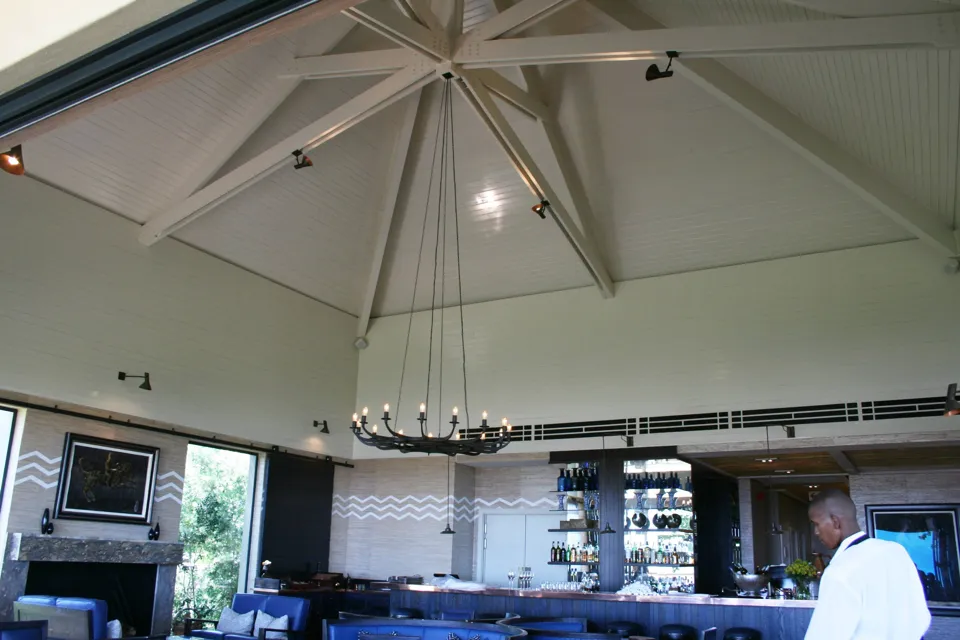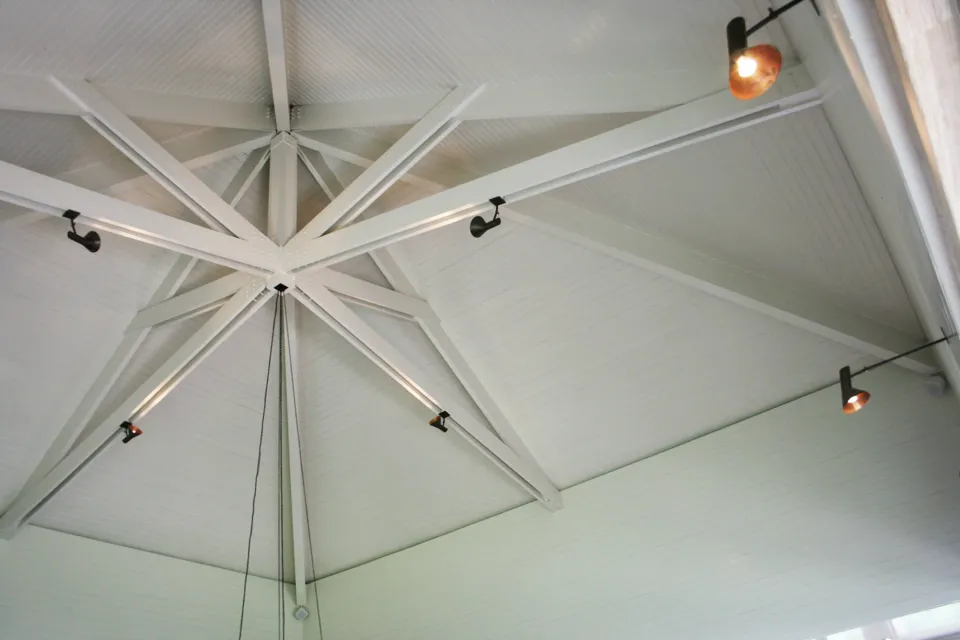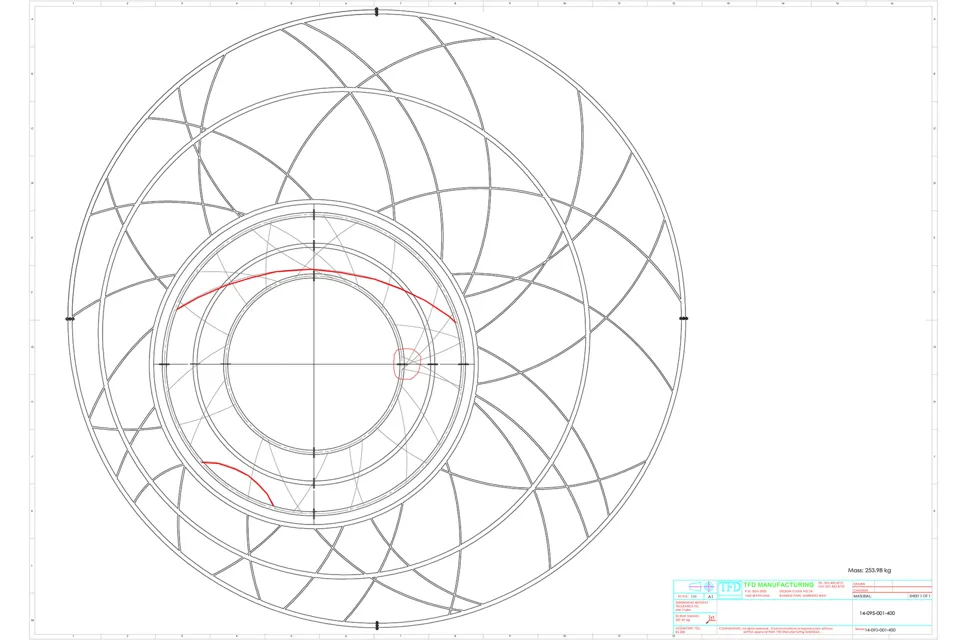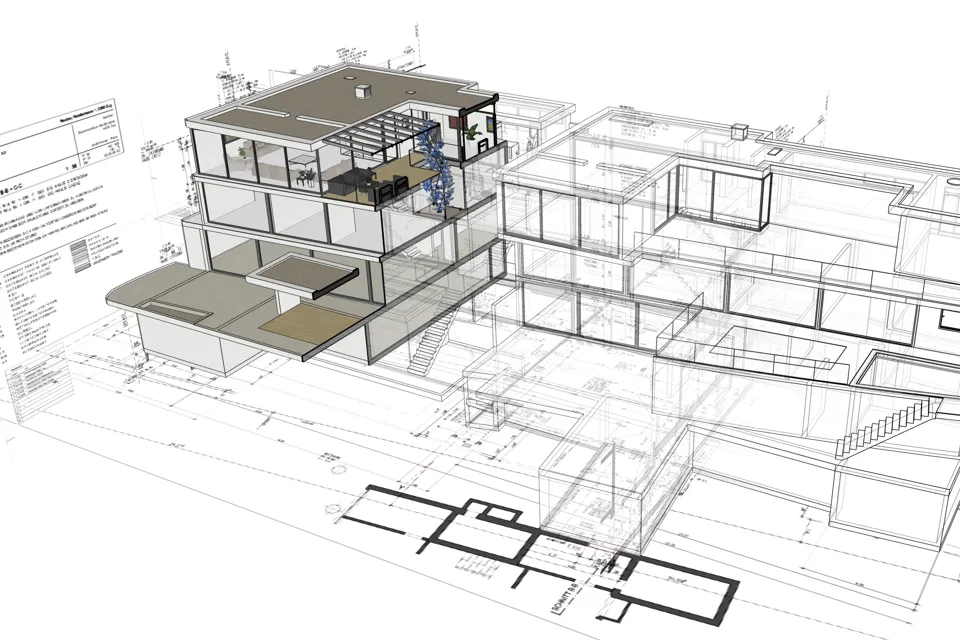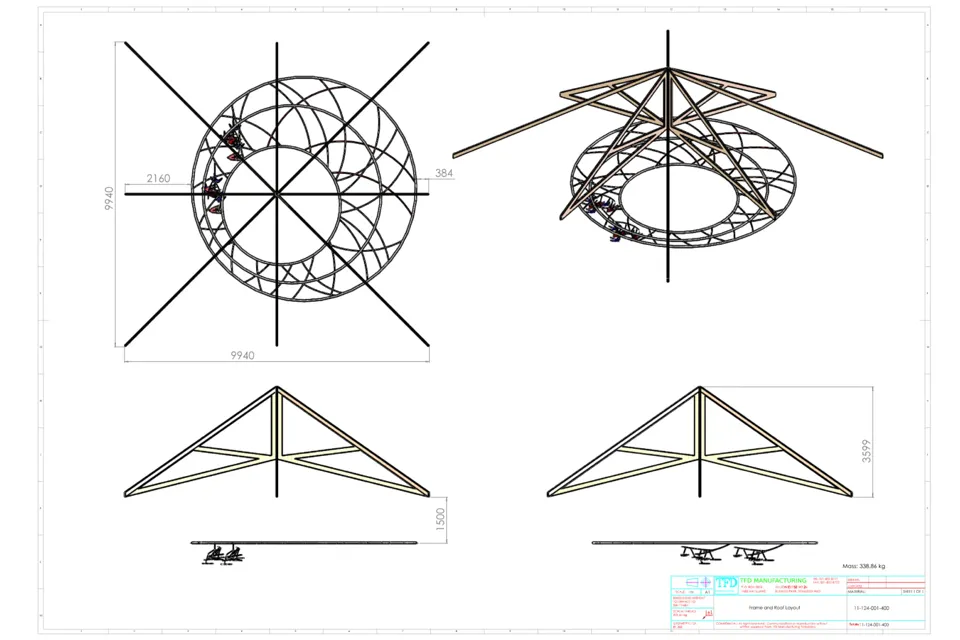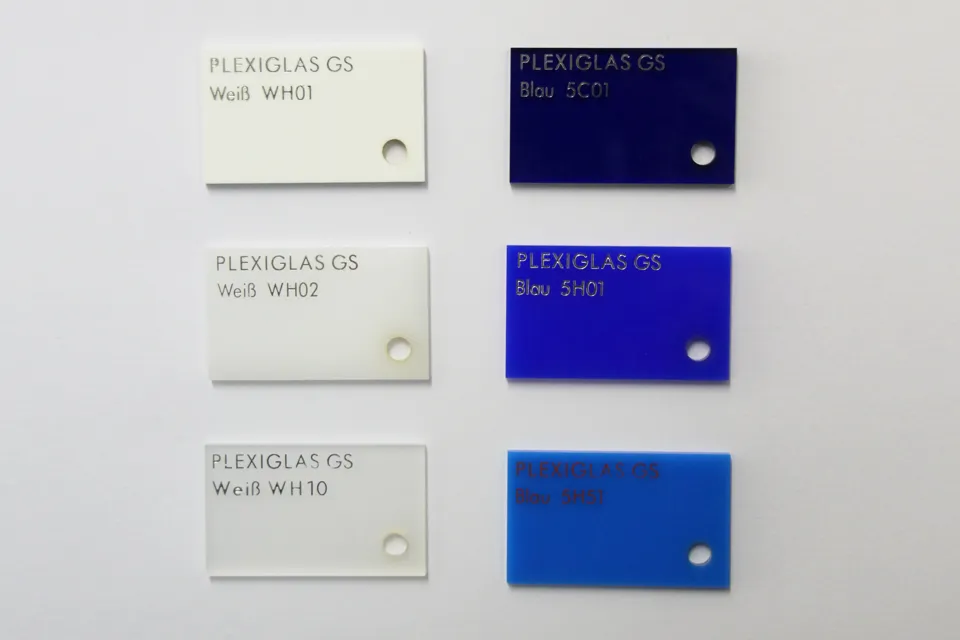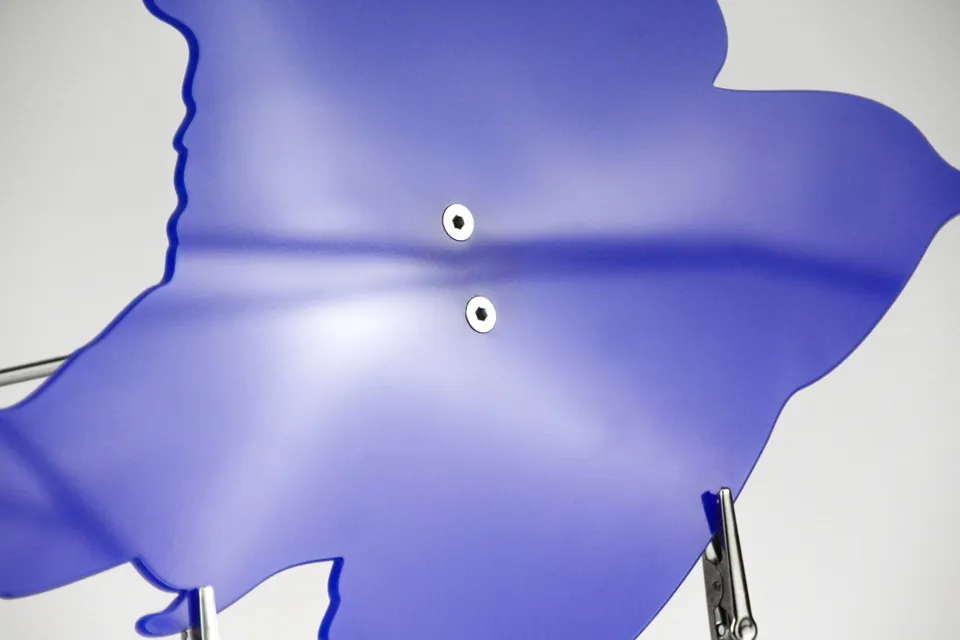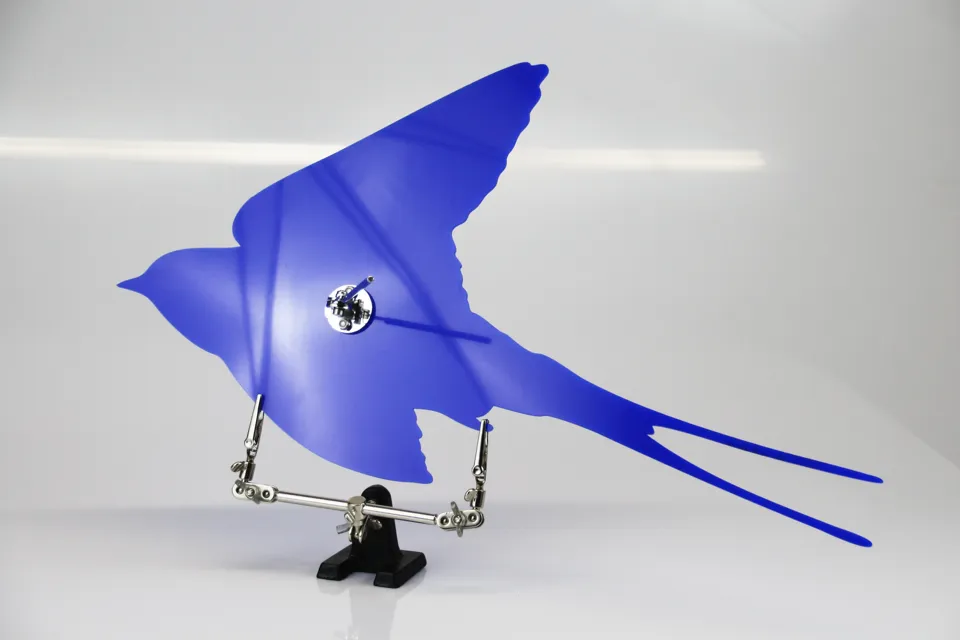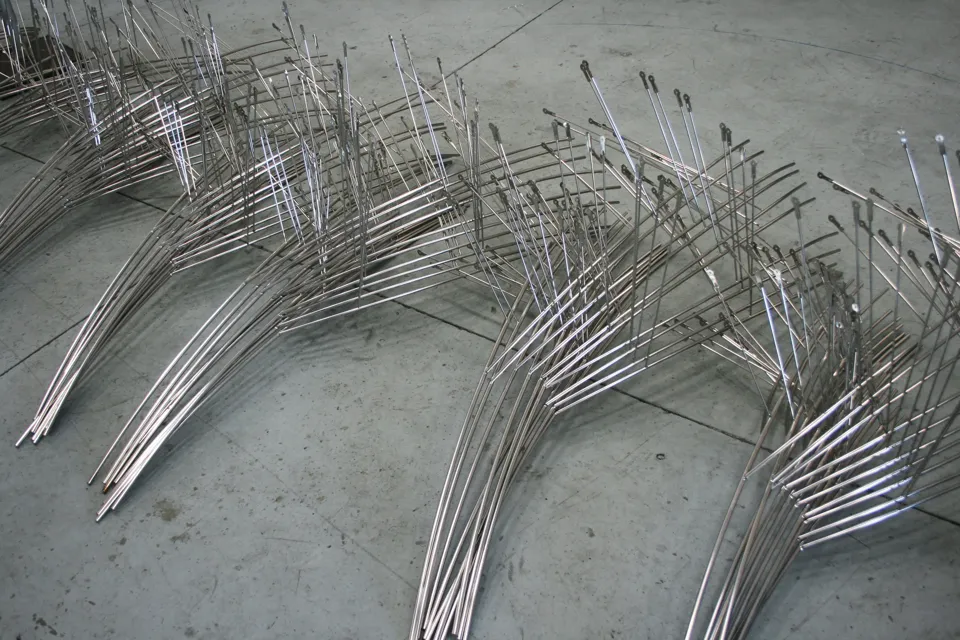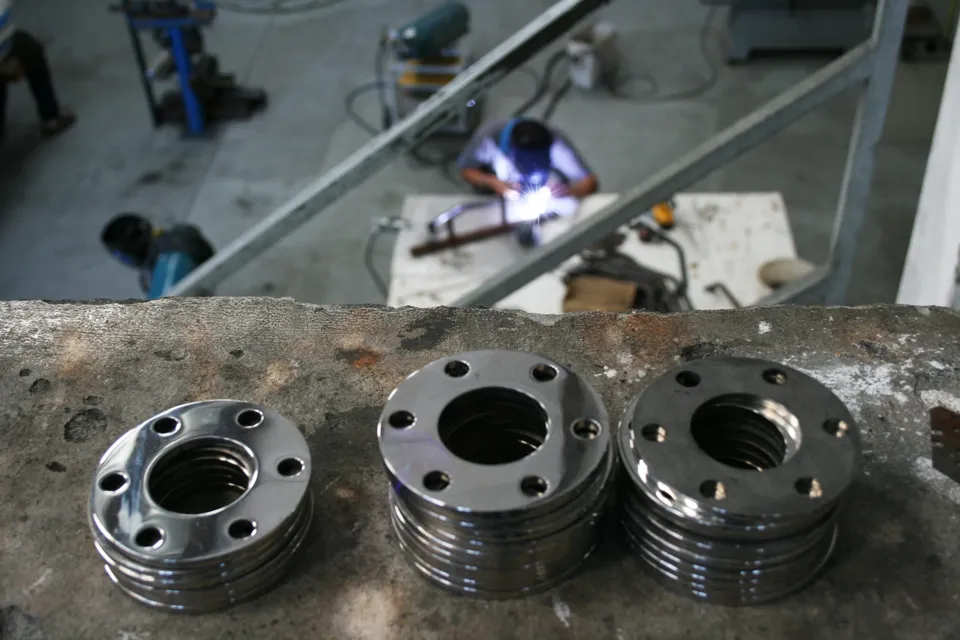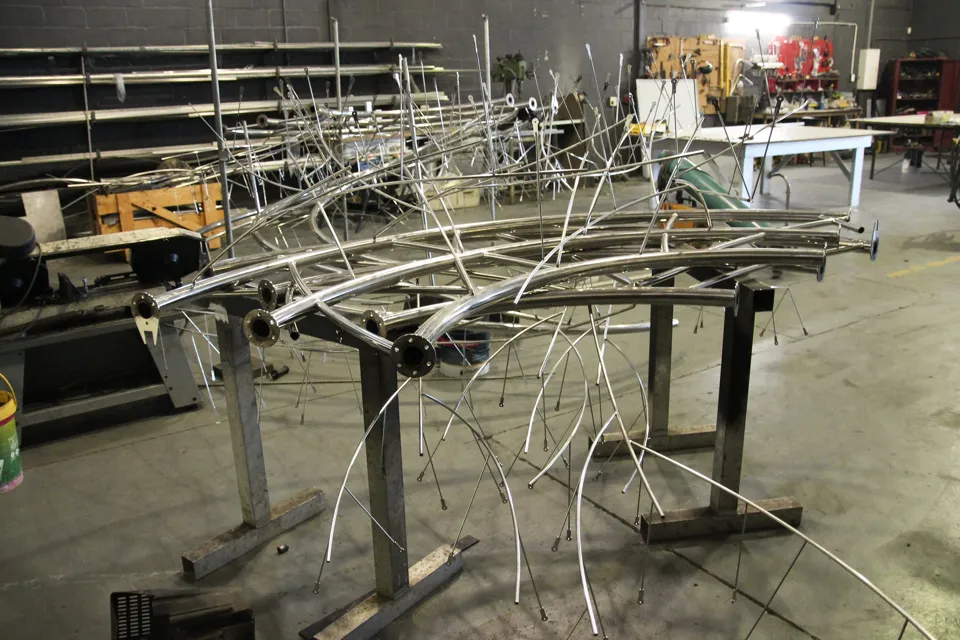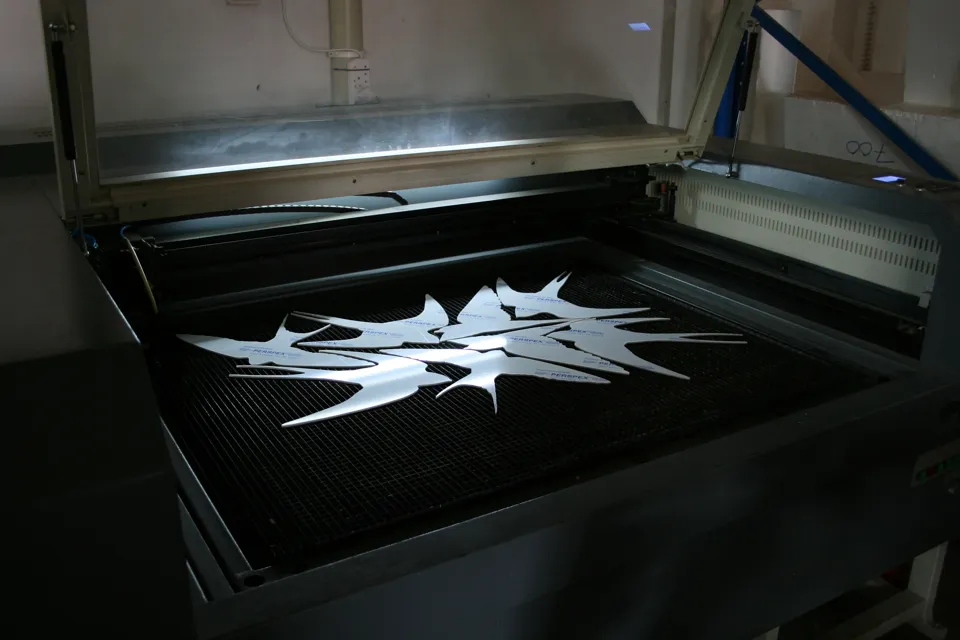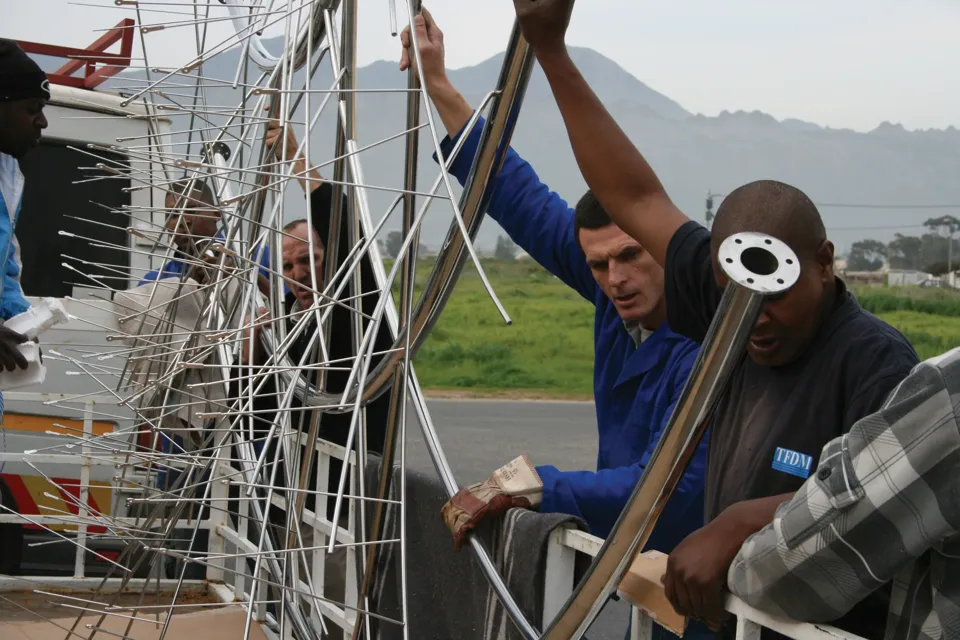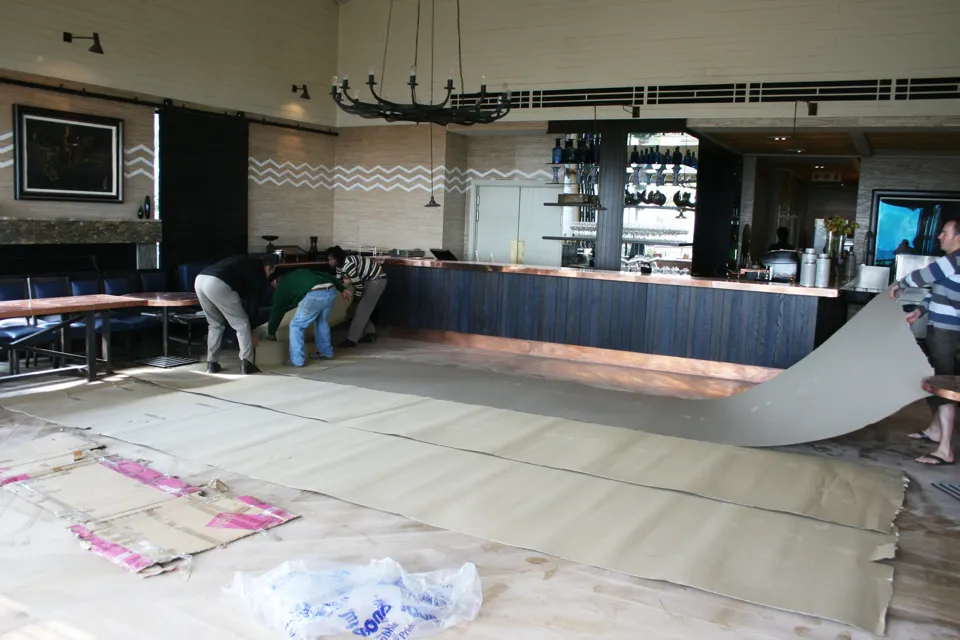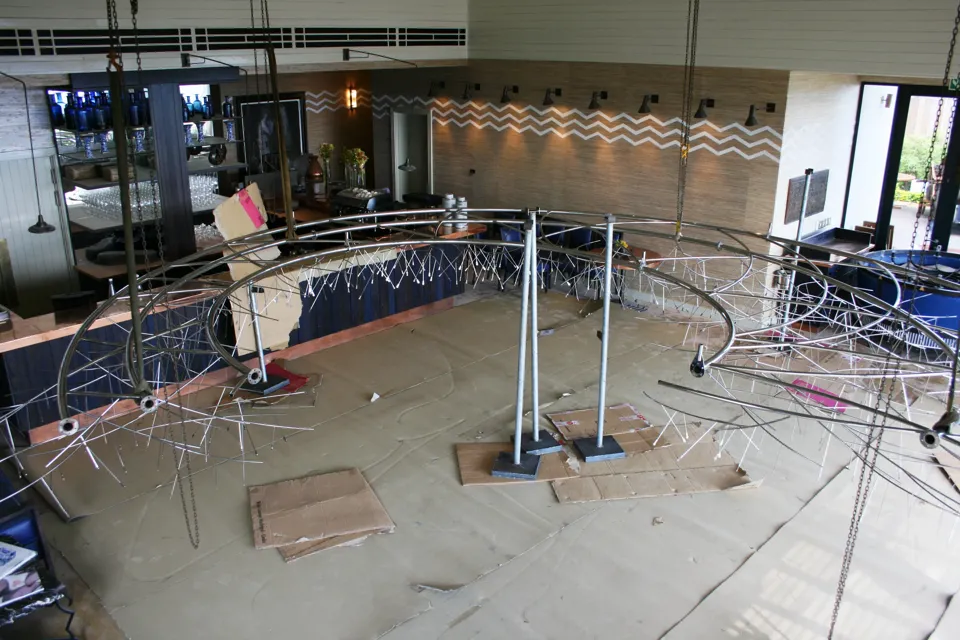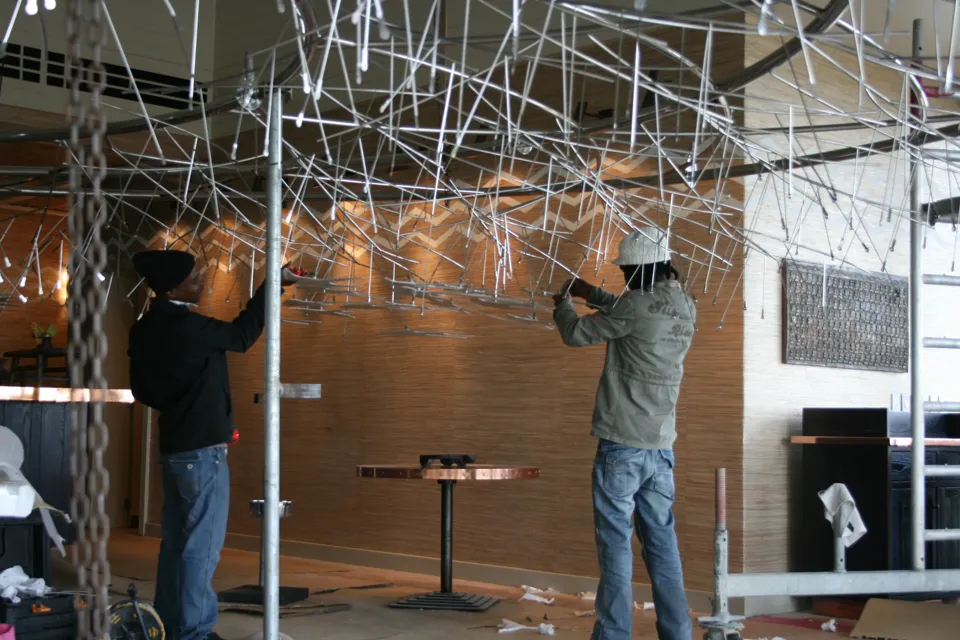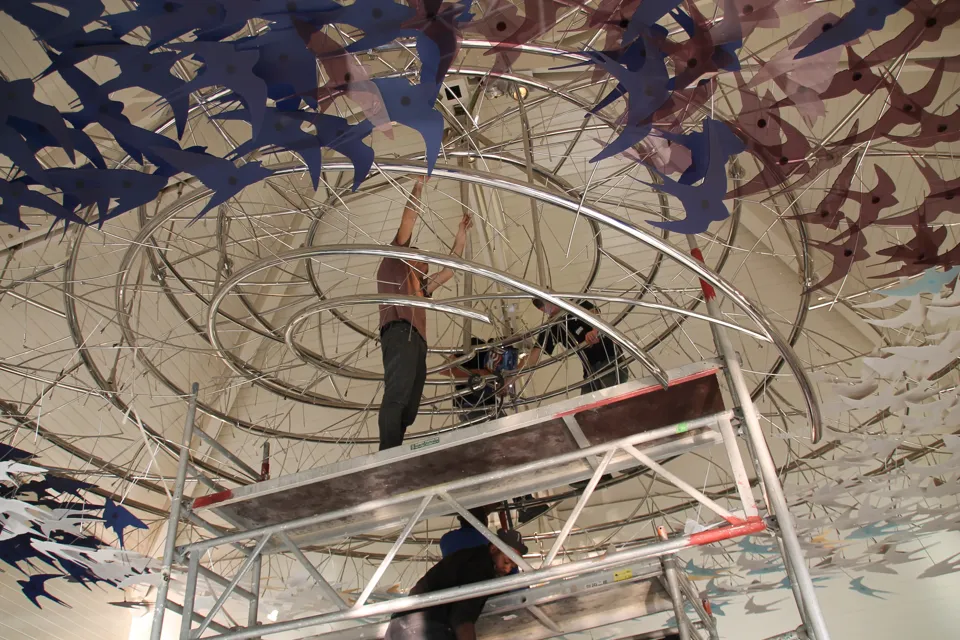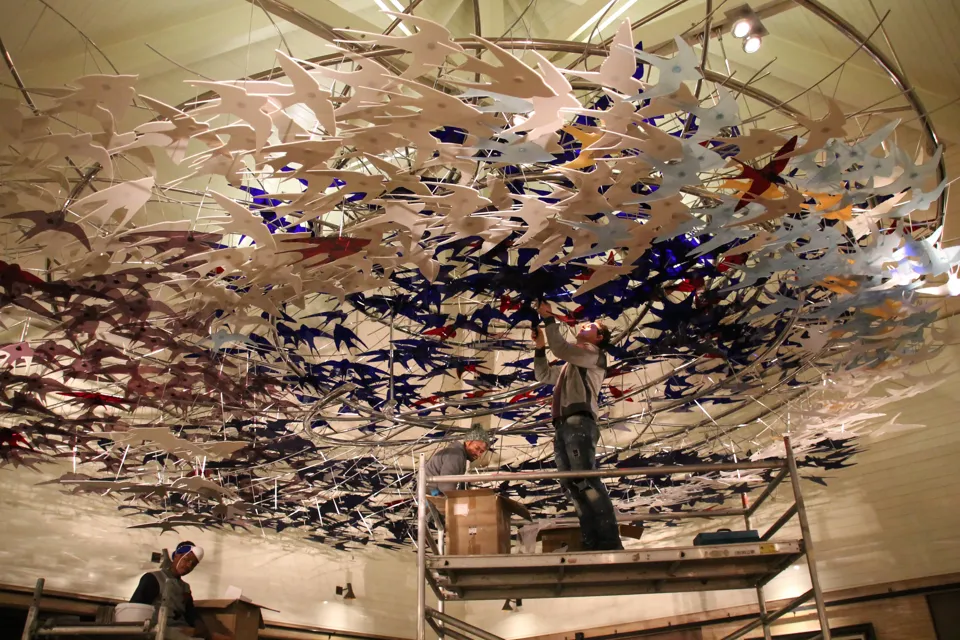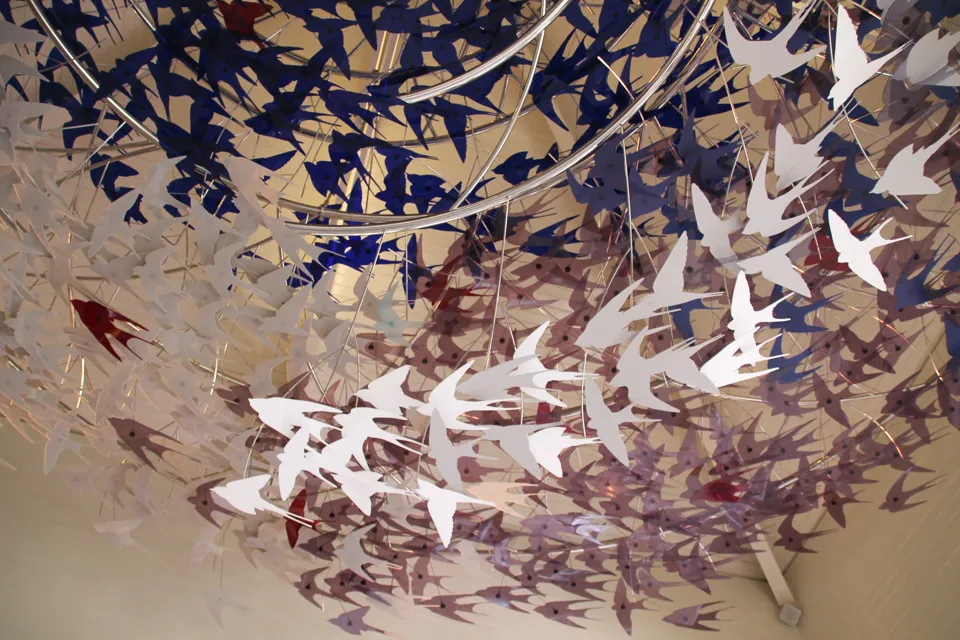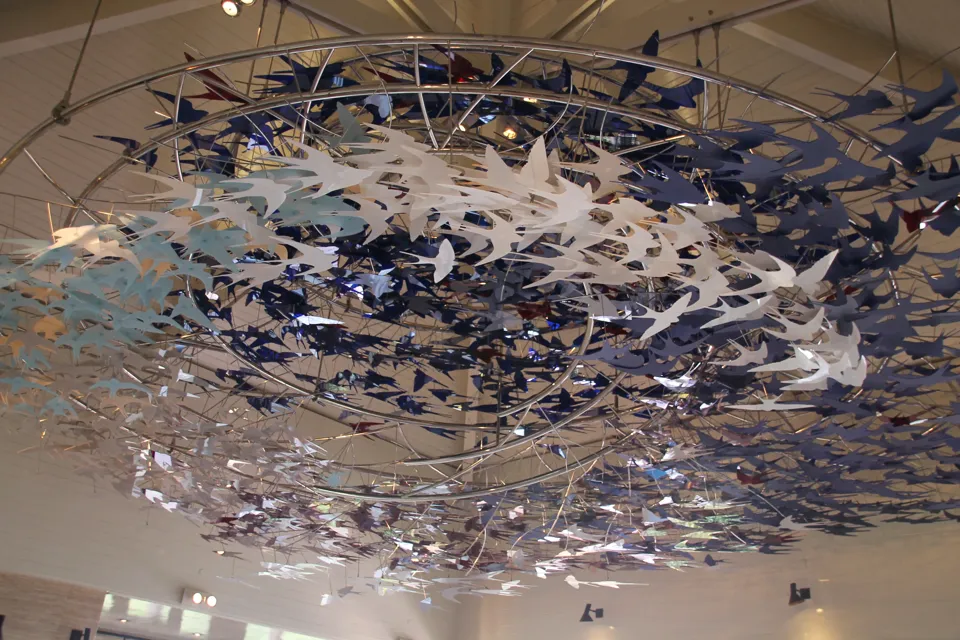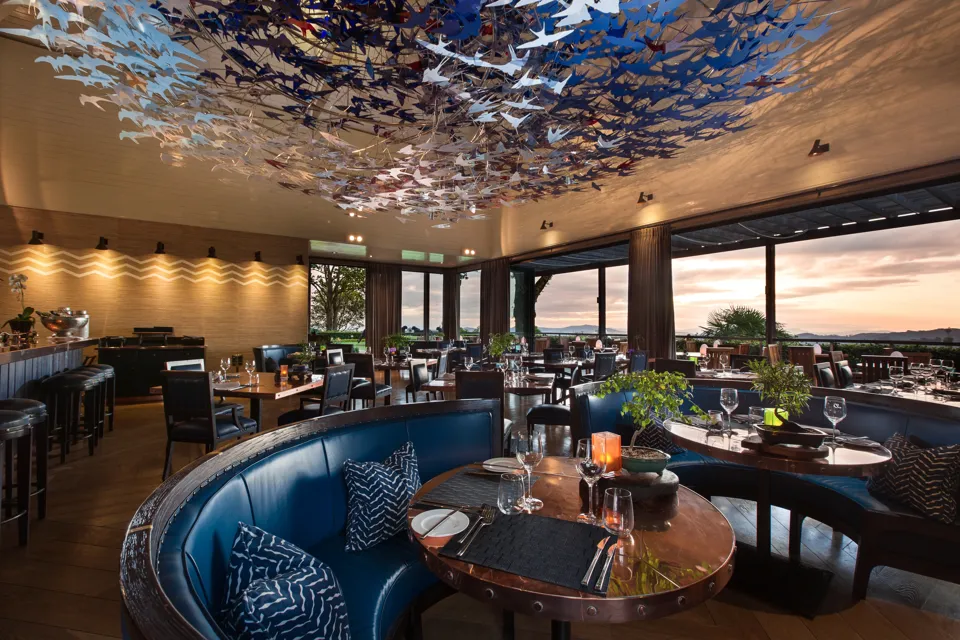Creating Bespoke Installation Art Worldwide
Installation artwork is brought to life through a co-operative interaction between artist and client, following the process below:
Research and development
Researching the site and its physical properties and decorative elements is essential background information for creating an artwork that compliments its environment. Translucent and reflective materials need special consideration for lighting and exposure to the sun, and any access restrictions for transport and installation are equally important.
The most important part of creating a site-specific installation artwork is gaining a fundamental understanding of the intended space and the client's specific needs. There is often a greater utility behind the artwork, yes, the client wants something beautiful to finish the space but perhaps also wants to visually lower the ceiling without altering the space. Often it’s to create a focal point or to bridge two areas.
It usually starts with a simple request to come up with something to compliment the space. This space can be seen as an extension of the clients self, a physical extension of the client's mind or desire. Often these spaces are designed by a multitude of people working together to create a vision of the clients intent.
For this reason, it is most important to analyse the space and gain valuable insight into the client's preferred style. It serves as a window into the client's mind and allows access to his or her desires at a fundamental level. The use of colour, the style of furniture and architecture are all telltale signs of the thing that is valued the most and is a defining characteristic of the design intent.
Most often it’s the small things that give it away. Where a Picasso in a prominent space tells you a lot about what kind of art this person likes, the way the family photos are arranged in the next room may be more telling of the intimate nature of their interests. Getting to the “mind” of the client is the best way to prepare yourself for making something very special for a specific person.
The physical attributes of the space are also of great importance. Geographical location will have a massive bearing on the way light interacts with the artwork. Is there direct sunlight on the installation? From which direction and for how long? How does this influence the design from a thermal or mechanical point of view? These are some of the questions that arise during the research and development stage of the artwork and need to be answered to ensure high quality and fidelity.
Concept design
The layout of the design acts as a part of the overall composition of the space. Line, form, colour and visual weight are vital elements that can marry the artwork to the environment. The conceptual design must be feasible and insight into fabrication techniques and material properties are essential. Having an idea of how you would transport and install the artwork helps in the design process.
The conceptual design starts with a well-defined model of the environment. All aspects of the space are considered and have a bearing on the implementation and effectiveness of the design. Although a specific artwork design is meant to stand out and impress, it also needs to fit in with its environment and not feel alien or segregated from it.
The layout of the design acts as a part of the overall composition of the space and therefore line, form, colour and visual weight are vital elements that help marry the artwork to the environment. It’s not enough to simply create a visually stunning design, if it does not compliment the spacial flow or clashes with it, it can create an unnerving feeling of disconnect.
Once the design layout is defined as a broad concept it needs to be visually represented with imagery reminiscent of a final design. Communicating the design intent accurately is crucial for reliable constructive criticism from the client or any parties involved with the production and installation phase of the project. The larger the project the better this communication needs to be to accommodate any unforeseen aspects or influences that may arise.
A well constructed conceptual design will take into consideration limitations on fabrication techniques, material strength as well as the complexity of transport and installation. Often there is a trade-off between the ease of construction and the complexity of installation. It may be a large artwork that could be installed in one piece, but if it needs to go halfway around the globe it may be better to design it in such a way that it can be disassembled for ease of transport.
The concept design ends with a visual presentation that describes the work. There may be a lot of detail missing in terms of a literal blueprint for the design with all its intricacies, but it should be comprehensive enough to verify its validity and serve as a common vision that the client can peruse and scrutinise before approval.
Planning and scheduling
Calculating the cost and time frames involved require design parts and their cost, production technique and logistical duration to be assessed. These parameters feed into the schedule, a clear picture emerges of exactly how everything will come together, what it will cost and how long it will take.
Once the concept design is approved the real work starts. This includes an in-depth look at every part of the design to establish a quantitive and realistic assessment of all the parts, production techniques and logistics as well as the material cost and timeframes involved. Structural parts need to be analysed by a third party to verify integrity which in turn may lead to design changes that may or may not affect costing and production times.
The final design is usually a careful dance between what is desirable and what is practical or achievable. With so many potential variable aspects in a single project, it is of vital importance that everything is planned down to the smallest detail. There are however always unknowns that can’t be predicted 100% and for this reason, there are always redundancies incorporated to minimise risk during transport and installation.
Because it is very difficult to estimate cost and duration based on a conceptual design the further development of an installation artwork usually only happens once the concept is approved by the client. Following this is the phase where all the panning happens and all the material samples are approved by the client for the final artwork. As the parameters are set and the schedule refined a clear picture emerges of exactly how everything will be done, what it will cost and how long it will take.
Production and logistics
A large installation piece requires that the artist communicate the design fluently between many people involved in the project. A unified vision with well-defined specifications and requirements reduce risk and ensure high-quality work throughout project management. Size limitations for cargo are often a design constraint that needs attention in advance on large installation artworks.
Large scale installation artworks often contain thousands of parts many of which need to go through multiple processes in two or more locations. This makes project management an important part of the production process. Knowing where things are and keeping track of them during production so that everything is ready and in the right place when assembly begins is important for keeping an accurate schedule.
There may be a part that goes from the laser cutting to hand polishing before being welded together and transported elsewhere to be electropolished for final integration with another part with its sequence of events. During all of this, all parts also need to go through a quality control process to ensure everything is made to the correct specifications and has a consistently high standard of quality.
The stainless steel used in installations is certified marine grade material suitable for most environments and polished to minimise any surface corrosion due to exposure. Plexiglass elements are either chemically or mechanically bonded depending on the amount of thermal stress the artwork is exposed to at the installation site.
Installation
Once transported to the location in parts with the plexiglass parts packaged with their protective film intact for removal during final installation on site. With the stainless steel structure assembled and installed, the colourful plexiglass elements are attached in an artistic interpretation of the design, refining the final artwork to perfection. Contact us if you would like to know more or commission a site-specific installation artwork.
In most cases, the artwork is disassembled for transport to the location. Plexiglass parts are packaged with their protective film intact to be removed before final attachment on site. These parts are individually packaged and boxed for protection and ease of use. The stainless steel structures are broken down to their smallest parts and crated with all necessary bolts and attachment mechanisms for installation.
Once on site the stainless steel structures are assembled and installed before adding the plexiglass elements to the artwork. The installation will often include the use of scaffolding or a mobile boom lift for access to the mounting points of the artwork. Large installations may also require a team of people to assemble the artwork and lift it into place.
Attaching the plexiglass elements are the most fun part of installing the artwork and an expression of creative interpretation. The process is reminiscent of flower arrangement, creating balance and harmony through the use of colour and the distribution of elements.
